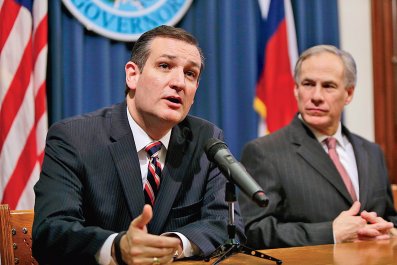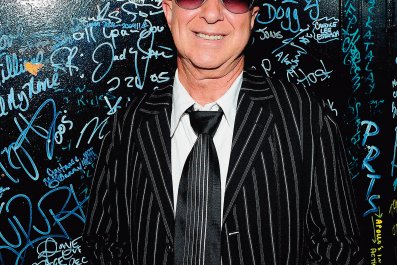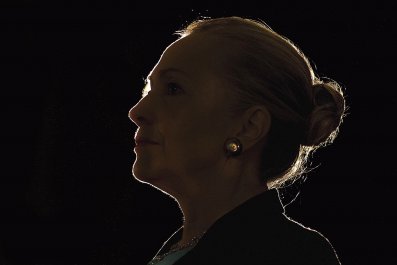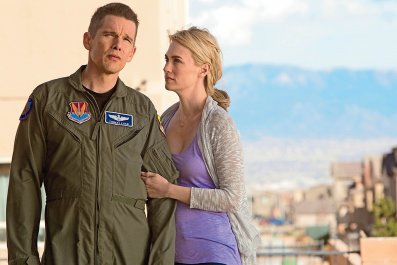On Friday afternoons, women start trickling into Dr. Norman Rowe's Upper East Side office, a bright, white space hidden inside a ritzy doorman building near Central Park. When they leave his office a short time later and head out to their evening engagements, they'll be just a few cc's heavier.
The women are getting their breasts enlarged several cup sizes in less than an hour. By midnight, though, the effects will be wearing off, and by the time Saturday brunch rolls around, their chests will be back to their natural sizes.
Rowe developed the 24-hour boob job as a test-drive for breast augmentation. "This is a tool for a plastic surgeon's toolbox," he explains. "The most common complaint is, 'I should've gone bigger.' But now I don't hear buyer's remorse anymore."
To pump up bosoms for an evening, Rowe injects saline—salt water—into the breast. As the saline spreads, the cup sizes increase. He pulls the plug when he reaches the patient's desired implant size. The process is not pleasant, but it doesn't leave women doubled over in pain either. "I've never had a patient stop from pain," Rowe says proudly, perhaps willfully ignoring how much some women will endure for a little extra bounce.
Plastic surgeons traditionally offered two methods for women to gauge what they would look like with bigger breasts: implants (or "cutlets") to fit into a sports bra and a tight T-shirt, or imaging technology, which manipulates an existing picture of the woman's breast to a larger size. Neither method is perfect, but they do the trick. Any girl who has stolen her mother's bra and pillaged the sock drawer can attest to this. But socks, like implants in bras or photographs, give only a visual representation, not the feeling of what toting around larger breasts will be like. "Cutlets and photographs are just not the same as [what's] inside," Rowe says. "People want a really clear representation—as close as you can get—of look and feel." Dr. Jennifer Capla, a New York City plastic surgeon with her own practice, says, "About a third of the women who come in for a breast augmentation are on the fence. They come in and say, 'I think I want it, but I'm nervous.'"
The injection, unlike a cutlet, also allows patients to pick where they would like their breasts to be filled out. "Women have visions of side-boob versus cleavage, how far apart they'd like them, or how close together," Rowe says. "I'll learn exactly what she wants. It's a dry run."
In Capla's practice, 80 percent of the women who get the injections go on to have a breast augmentation. Most of those who decide they don't want an implant say it's because the saline experience allowed them to better appreciate their natural cup size. "They just don't like the wiggle of larger breasts," Rowe says.
Some women come back for another injection. Rarely do any of them ask for a third. When it comes to temporary breasts, the third time is not the charm—it's a red flag for surgeons, who try to eliminate patients who want a very temporary breast enhancement for fun, rather than as part of the research for a medical procedure they are considering living with for the rest of their life.
"I try to weed out patients who come in for recreational purposes, because that is just not my intent," Capla says. To discourage those who only want 24 hours of enhanced breasts, the prices are set quite high. Capla charges $2,500, though the amount is later deducted from the full cost of surgery if the patient chooses to do an augmentation.
Rowe has the same pricing model. "Part of the reason why we set that price a bit high is that I wanted to discourage the people who are just doing it for the weekend. I wanted the people who are doing it for serious reasons. For $200, $300, you would get people who would want to do it for a night, or for an event." Kristen, who declined to give her last name, spent $2,500 on the procedure with Rowe in order to research which size breast implants she wants, but could see the quick fix becoming popular for the recreational market. "I think it's a really good idea, if you have a movie shoot, if you're a model. Even if you just want clothes to fit better," she says. "It just doesn't last long. Just like botox and fillers, it is not permanent." Kristen plans to get a permanent breast augmentation in June.
Some surgeons offer lower prices for the instant boobs, including Dr. Terry Dubrow, a plastic surgeon who appears on the show Botched as a specialist in fixing cosmetic surgery gone wrong. Dubrow doesn't offer a lower price to lure in recreational boob-jobbers. "The cost of the materials is about $20. It's hard for me to go from $20 to $2,000, because I'm [just] putting a few needles in their breast." Even though he does it when a patient insists, Dubrow is vehemently opposed to the procedure and discourages clients. "I think that it is 80 percent pointless and 20 percent a question of, Why take a risk on doing something pointless?
"You have to put a relatively large needle to inject into deeper portions of the tissue," he explains. "Anyone who has had dental work done—it is that kind of sore."
There is also the matter of stretching, which is widely debated amongst plastic surgeons. While some surgeons believe this procedure could not stretch out the breast, Dr. Michael Edwards, the president of the American Society for Aesthetic Plastic Surgery, who focuses on breast-augmentation surgery, warns that it might. "Depending on how much fullness you put in, you could stretch out the tissue."
Capla, who has worked with transgender women considering breast implants, believes stretching could be possible under extreme circumstances. The space for the implant is smaller in those who were born male, and stretching could be beneficial to the procedure. Dubrow has also had requests for the saline injection by men seeking the experience of pectoral implants.
Surgeons agree that the popularity of saline injections could create a black market for 24-hour boob jobs. Saline injections, if the demand grows, could go the way of face and derriere fillers: dangerous hotel room procedures done for cash by untrained, makeshift beauticians. "Unfortunately, in our country…we have pretty much unsupervised and unlicensed individuals doing these things. The patients are getting hurt, and they need to understand that if they want to undergo something like this, do your homework and find a registered plastic surgeon," says Dr. Anne Taylor, a plastic surgeon in Columbus, Ohio. Complications that could arise from an unlicensed saline injection include infection at the injection site, irreparable damage to the breast tissue and potential puncturing of the lung if the person administering the injection uses a needle not designed for the procedure.
As the procedure becomes more common, surgeons could start offering the service for purely extracurricular reasons. Ethics, Taylor believes, are not what's stopping them: "We do things all the time that are only done to improve cosmetic appearance. To say that [this] is somehow wrong because it only lasts 24 hours, that's questionable. But this is very temporary, with a very low reward."
Edwards puts it more bluntly: "If you really want a fuller breast and you're going to a dinner party, for goodness sake, pad your bra."



















